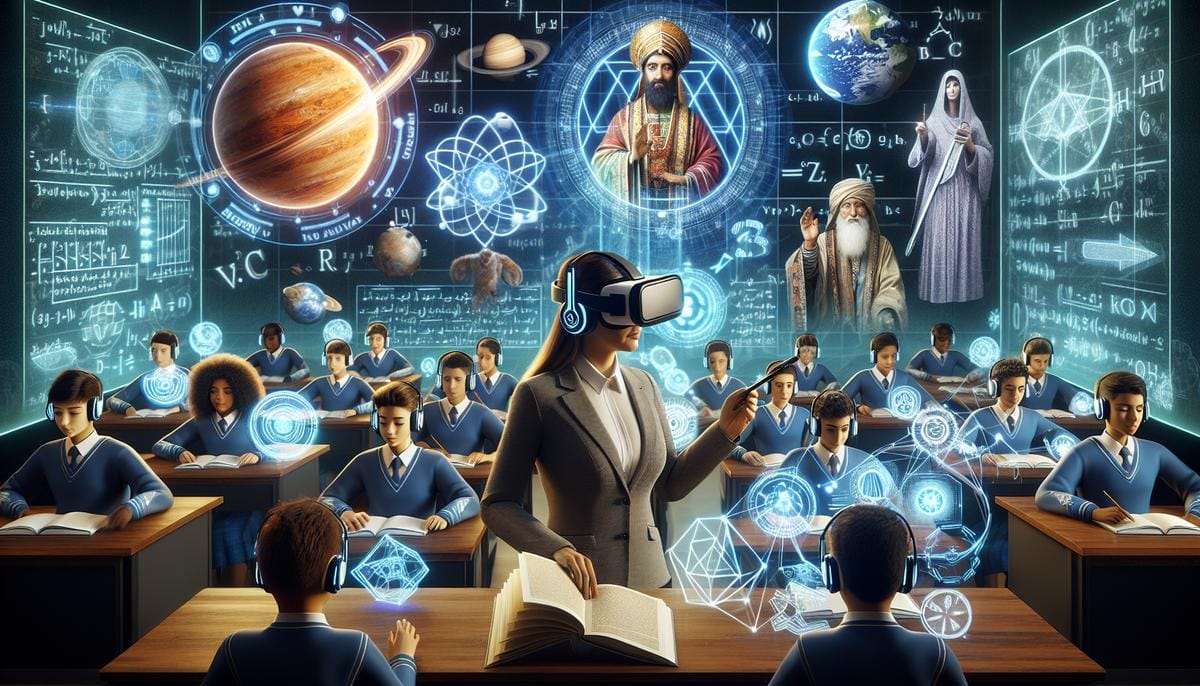The Virtual Reality Classroom: A New Dimension in Education

Imagine stepping into the classroom, and instead of being surrounded by four walls and a whiteboard, you find yourself transported to ancient Egypt, exploring the pyramids and learning about their history firsthand. Or perhaps you are standing on the surface of Mars, conducting experiments and gathering data for your science class. This may sound like science fiction, but with the advent of virtual reality (VR) technology, it is becoming a reality in education.
What is Virtual Reality?
Virtual reality is a computer-generated simulation of an environment that can be interacted with in a seemingly real or physical way by a person using special electronic equipment, such as a headset with a screen or gloves fitted with sensors. VR allows users to immerse themselves in a completely different world, experiencing sights, sounds, and even touch that feels incredibly real.
How VR is Changing the Classroom
The traditional classroom setting has remained largely unchanged for centuries, with students seated at desks, facing a teacher who delivers information through lectures and textbooks. But with the rise of VR technology, the classroom is undergoing a radical transformation. VR offers a new dimension in education, allowing students to learn in a more interactive, engaging, and memorable way.
Engagement and Interactivity
One of the biggest advantages of VR in the classroom is the level of engagement it provides. Instead of passively listening to a lecture, students can actively participate in the learning process by exploring virtual environments and interacting with objects and characters. This hands-on approach to learning has been shown to increase retention and understanding of the material being taught.
Memorable Experiences
Another benefit of VR is the creation of memorable experiences that can make learning more enjoyable and effective. By transporting students to different times and places, VR allows them to experience history, science, and other subjects in a way that is not possible with traditional teaching methods. These experiences can leave a lasting impression, making the material more memorable and easier to recall later on.
Accessibility
VR also has the potential to make education more accessible to students who may not have the opportunity to visit museums, travel to foreign countries, or participate in hands-on experiments. With VR, these experiences can be brought directly to the classroom, allowing all students to benefit from them, regardless of their location or financial situation.
Challenges and Considerations
While VR offers many benefits, there are also challenges and considerations that must be addressed when implementing it in the classroom. One of the biggest challenges is the cost of the technology, as VR headsets and software can be expensive. Additionally, there is the issue of accessibility for students with disabilities, as well as potential health concerns related to prolonged use of VR headsets.
Cost
The high cost of VR technology can be a barrier to its implementation in education. However, as the technology becomes more widespread and affordable, it is likely that the cost will decrease, making it more accessible to schools and students.
Accessibility for Students with Disabilities
Another consideration is the accessibility of VR for students with disabilities. While the technology offers many opportunities for interactive learning, it is important to ensure that it is inclusive and accessible for all students. This may require additional resources and accommodations, such as modified headsets or alternative control methods.
Health Concerns
There are also health concerns related to the use of VR headsets, such as eye strain, motion sickness, and potential long-term effects on vision and cognition. It is important for schools to consider these risks and implement guidelines for the safe use of VR in the classroom.
The Future of VR in Education
Despite the challenges, the future of VR in education is bright. As technology continues to improve and become more affordable, it is likely that VR will become a standard tool in the classroom, offering students an immersive and engaging way to learn. With the potential to transform the way we teach and learn, VR represents a new dimension in education that is full of possibilities.
Conclusion
The virtual reality classroom is not just a futuristic idea, it is a reality that is already taking shape in schools around the world. With its ability to engage students, create memorable experiences, and make education more accessible, VR has the potential to revolutionize the way we teach and learn. As we continue to explore the possibilities of this new dimension in education, it is important to address the challenges and considerations that come with it, to ensure that all students can benefit from this exciting technology.


